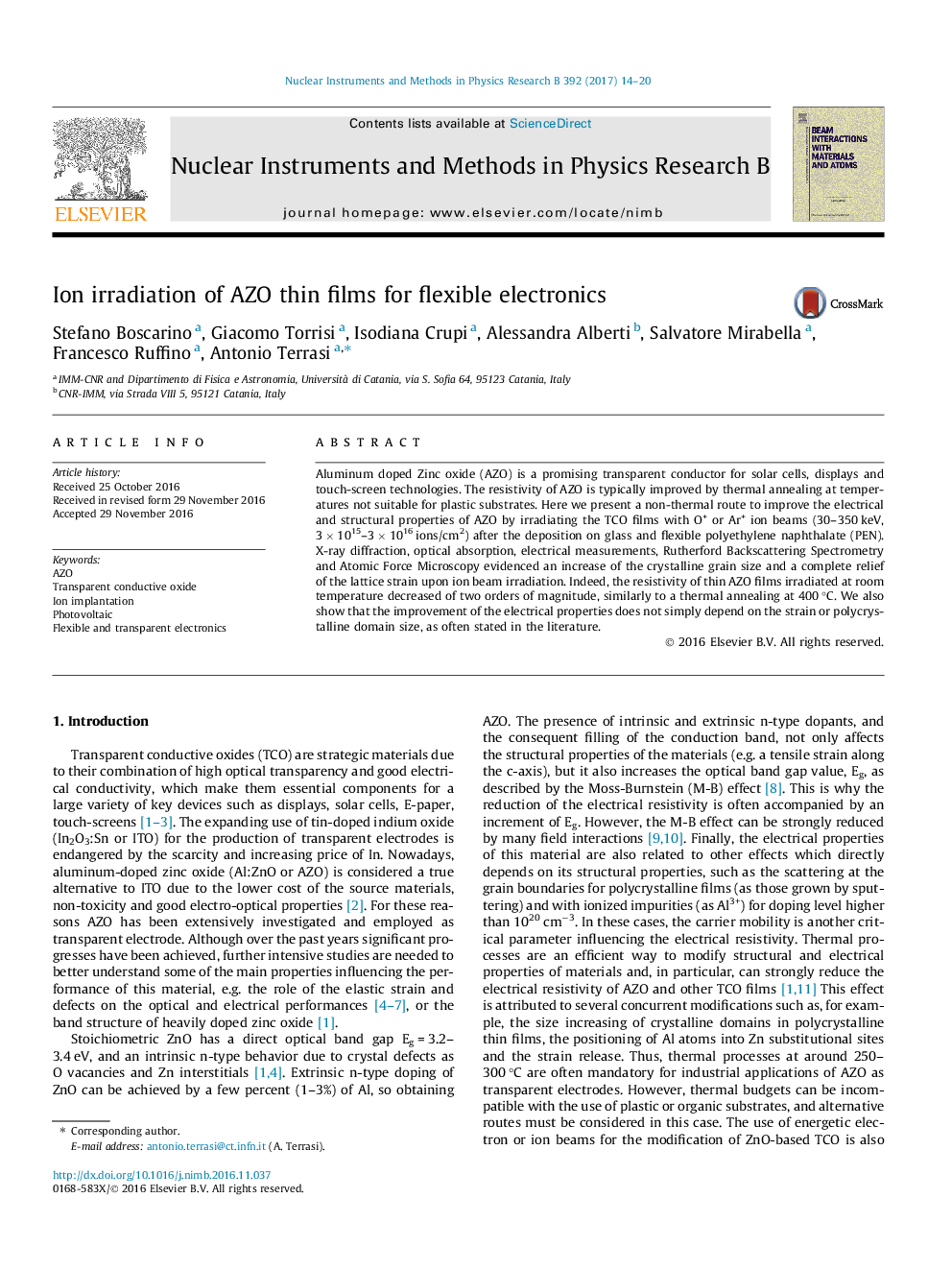| Article ID | Journal | Published Year | Pages | File Type |
|---|---|---|---|---|
| 5467624 | Nuclear Instruments and Methods in Physics Research Section B: Beam Interactions with Materials and Atoms | 2017 | 7 Pages |
Abstract
Aluminum doped Zinc oxide (AZO) is a promising transparent conductor for solar cells, displays and touch-screen technologies. The resistivity of AZO is typically improved by thermal annealing at temperatures not suitable for plastic substrates. Here we present a non-thermal route to improve the electrical and structural properties of AZO by irradiating the TCO films with O+ or Ar+ ion beams (30-350 keV, 3 Ã 1015-3 Ã 1016 ions/cm2) after the deposition on glass and flexible polyethylene naphthalate (PEN). X-ray diffraction, optical absorption, electrical measurements, Rutherford Backscattering Spectrometry and Atomic Force Microscopy evidenced an increase of the crystalline grain size and a complete relief of the lattice strain upon ion beam irradiation. Indeed, the resistivity of thin AZO films irradiated at room temperature decreased of two orders of magnitude, similarly to a thermal annealing at 400 °C. We also show that the improvement of the electrical properties does not simply depend on the strain or polycrystalline domain size, as often stated in the literature.
Related Topics
Physical Sciences and Engineering
Materials Science
Surfaces, Coatings and Films
Authors
Stefano Boscarino, Giacomo Torrisi, Isodiana Crupi, Alessandra Alberti, Salvatore Mirabella, Francesco Ruffino, Antonio Terrasi,
